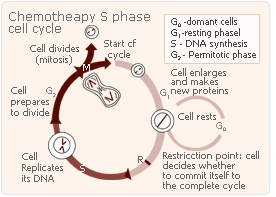
Extended use of hormone replacement therapy during menopause is associated with an increased frequency of breast cancer. Paradoxically, hormone replacement therapy during menopause is also associated with decreased mortality from breast cancer. This has puzzled researchers for some time. The 1999 study by Dr. Melody A. Cobleigh et al., “Hormone Replacement Therapy and High S Phase in Breast Cancer” takes on this paradox. It studied the influence of hormone replacement therapy during menopause on the types of breast cancers that women developed as a way to tackle this puzzle. They hoped that a biological rationale for this paradox would present itself.

The study took place between December 1989 and November 1996 from a teaching hospital somewhere in the Midwestern metropolitan area. A total of 331 postmenopausal women were studied, who over the course of the years, developed a total of 349 incidences of breast cancers. Variables included pathologic tumor size, number of involved nodes date of last menstrual period, occurrence of gynecologic surgery, use of hormone replacement therapy during menopause, type of hormone replacement therapy during menopause and percentage of cells in S phase.
For the purposes of this study, menopause was defined to hysterectomy, not having a menstruation for twelve months or being a patient older than 55 years old. Hormone replacement therapy was defined as receiving estrogen or progestin. There were several categories of women who had used hormone replacement therapy during menopause: those who had used hormone replacement therapy within one month of their diagnosis of breast cancer, those who had stopped hormone replacement therapy before one month of their diagnosis of breast cancer and those who used hormone replacement therapy (the drug tamoxifen) during their breast cancer treatment. The biggest category (47%) was women who had never used hormone replacement therapy during menopause, followed by those currently using hormone replacement therapy (41%), prior users of hormone replacement therapy during menopause while only 4 women (1%) used the hormone replacement therapy drug called tamoxifen.
The S phase (low vs. high) was compared between women who had taken hormone replacement therapy during menopause and women who had not taken hormone replacement therapy during menopause.
The results were that high S-phase cancers had a markedly higher rate of occurrence among women who had received hormone replacement therapy during menopause compared to those who had not received hormone replacement therapy during menopause. However, hormone replacement therapy was found to stimulate growth only in ER-positive cancers. It had little effect on ER negative cancers. The significance of high S-phases in relation to cancer is unknown. It is hypothesized that use of hormone replacement therapy may hasten the growth of cancers in their earlier stages, which is why they are easier to treat once they are caught.